The Epic of “Big Daddy Physics”
He’s a philosopher, a husband, a martial arts fighter and a lover of cats
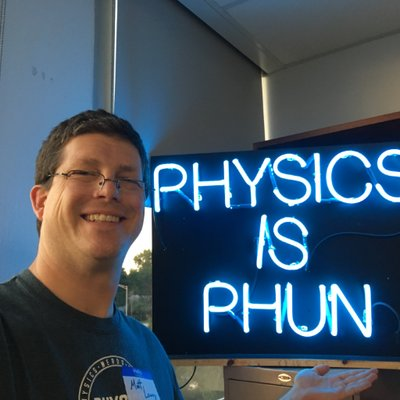
May 29, 2019
After years and years of pushing your way through various science classes, when you finally reach the pinnacle of your scientific career at LFHS, you might be lucky enough to count yourself as a pupil of Big Daddy Physics.
Mr. Matthew Lowry, the Protector of the celebrated Physics Cave, is one of the greatest teachers I have ever had the honor of learning from. He has so much passion for physics and he goes to great lengths to share that passion with his students.
But as any of his students can tell you, he is far more than just a physics teacher. Over the last year, my classmates and I have seen bits and pieces of who he is. He has a degree in philosophy. He is a loving husband. He is a second-degree black belt and a teacher of Aikido, a form of Martial Arts. He enjoys classical music, classic rock, and epic movie soundtracks. He has four cats. He loves talking about the stars. And he loves to share his curiosity with students.
As a student of Mr. Lowry, I began to wonder about his path to the Physics Cave of Lake Forest High School. I now intend to tell the story of not only a physics teacher but also, as Lowry himself put it, “a wannabe philosopher”, “a student of history”, an extensive practitioner of martial arts, “a lover of cats,” and “a friend and a companion to [his] wife.”
Lowry attended the community high school in his small Kentucky hometown. Growing up, he loved anything and everything related to science fiction and space.
“I would always steal my brother’s classic science fiction books,” Lowry said. “I would devour them ravenously.”
He would spend many a night staring into the starry night sky, wondering about the secrets of our universe. Unsurprisingly, this led Lowry to astronomy, and eventually, physics — the study of those secrets.
While a student in his senior-year introductory physics course, Lowry picked up a book that would change his life forever.
“I picked up a copy of Stephen Hawking’s A Brief History of Time,” he said. “I ripped through that book; I read it all in just a couple of days. I understood, maybe, 5 percent of what I read. But the other 95 percent got me so curious because there [were] so many open questions and these were the big cosmological questions. It was the perfect marriage of physics and astronomy and so I said ‘this is what I want to do, I want to study physics.’”
Now decided on physics, Lowry set out to Western Kentucky University, where he began his study of the mysteries of the universe and met his future wife. On the side, he paid for his meals by selling his notes.
After Western Kentucky, Lowry moved on to Purdue University, with a Ph.D. in physics as his goal. Helpfully, Lowry did exceptionally well at Western Kentucky — so well, he earned a Doctorate Fellowship from Purdue. This meant that the school would pay him to attend graduate school at Purdue and to teach some classes on the side.
However, over his 3-4 years as the head physics TA at Purdue, Lowry found that he began to spend more and more of his time in the classroom, instead of the lab.
“I got a lot more joy and interest out of my teaching,” he said.
Eventually, after spending these years helping younger students to grasp complex concepts like the Theory of Relativity or circuits with a host of resistors, capacitors, and inductors all mixed up, he realized what he wanted to do.
“The handwriting was on the wall. It became pretty obvious what I wanted to do; it was pretty obvious that I wanted to go in this direction and not the direction of research.”
And so, he spoke with his research counselor, said his farewells to his fellow researchers, and journeyed across the campus to the College of Education. For two more years, he worked to earn his Teacher’s Certificate—the license that would enable him to teach in public schools. However, even as he was learning to teach, Lowry could not give up his newfound love.
“Ironically, as I was learning how to be a teacher, I kept teaching in the Physics department at Purdue as a TA and I also picked up a side job teaching Physical Science at a local community college. I was in this weird spot where I was taking all of these classes about how to be a teacher, meanwhile, I was doing it like crazy and, so, it was interesting. The conversations I would have with my professors were, they would say things and then I’d be like, ‘yeah, well, I’m doing that’ and then they’d be like ‘What? What are you doing? Oh. Wow.’”
Over the two years he was working on his Certificate, Lowry also began to teach at a gifted students program held at Purdue during the summer. Little did he know that this program would eventually take him out of central Indiana and to a little town north of Chicago.
After his second year of this program, there was a little ceremony — a celebration of learning from the summer and a chance for students’ parents to meet the instructors. Lowry was sitting in the lobby of the dorm, having already met all of his students’ parents, simply waiting for the free lunch and reading a book.
“I was literally just waiting for the free food. I had nothing else to do because I had already talked to everyone I needed to talk to. So I was sitting there, reading a book in the lobby. And this is the thing that’s crazy. I didn’t have to stay for the free lunch—I could have just left. But anyways, I’m sitting there, and then this woman walks up to me and she taps me on the shoulder and I look at her. I don’t recognize her, I have no idea who she is, she doesn’t look anything like any of the parents I had met. Then she says, ‘Excuse me, are you Matt Lowry?’ and I said, ‘Yes, I am,’ so she says, ‘You’re the physics instructor, right?’ and I said ‘yes.’ And then she extends her hand and I shake it and she says, ‘Hi, my name is Dr. Marilyn Howell and I’m the principal of Lake Forest High School.’”
Dr. Howell’s son was actually participating in the program and, although her son didn’t have Lowry, she was looking through the pamphlet for potential teachers for the AP Physics program, as the current teacher was ready to retire and she needed someone new. And good. After all, as Lowry says, “The AP Physics program is the big enchilada.”
So, after a few months and an interview, Mr. Matthew Lowry found himself lecturing in a classroom at Lake Forest High School.
However, he was soon doing far more than lecturing. He was going out of his way to provide countless extra opportunities for learning to curious students, incentivized as extra credit. This year, he has offered our class a number of cold-weather labs (as a result of the Polar Vortex), he has offered to teach us how to build a charge meter (a device that measures the polarity of electric charge), he has spent hours of his own time running groups through the Millikan Oil Drop Experiment (the experiment that determined the charge of an electron), he has elected to help one of his own students pursue his own scientific interests.
Robert Hammond, a student in Lowry’s AP Physics C class, had heard about Lichtenberg Figures and the art that stemmed from burning them into wood. These intricate fractal patterns form when bolts of lightning fall from the sky and strike trees on their way to the ground. Since they were discovered, a new art form has arisen where electric currents are run through wood to create beautiful electric trees. Hammond was initially considering using these patterns to decorate the snowshoes he was building for his Outdoor Adventures class and asked Lowry if he could help.
While Lowry had never had much experience with Lichtenberg’s little marvels, he gladly sacrificed hours of his time to satiate Hammond’s curiosity — and mine. But you need not take my word for it; the videos speak for themselves.
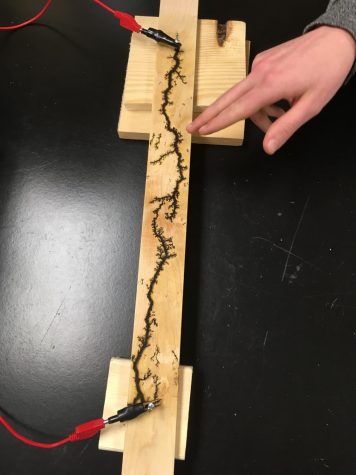
Lowry strives to find exciting ways to kindle curiosity in his students and encourage their sense of wonder in the world when he can.
“It takes me back to the time when I was a student,” Lowry said. “My wife and I, we were both physics majors together, and all these decades later, we still talk about the experiments that we did as lab partners. We have never lost that curiosity. We have never lost that childlike joy of observing and doing experiments and seeing how the world really works. Whenever I have the chance to see that with my students, to give you guys that opportunity, even if it’s something that I’ve seen many times, I can still relate to that childlike joyful curiosity of learning something new and I want to provide that to you all as much as possible.”
For Lowry teaches for those “Eureka” moments when his students finally grasp concepts seemingly beyond comprehension and for the jaw-dropping awe when we see how strange and wonderful our universe really is and for the love of learning that he hopes to curate in each of us.
“To me, that’s what it’s all about. It’s about learning new things. Because then you learn one new thing and now that’s not enough. So now you have to learn something else new and something else new and the next thing you know, you’ve written a Ph.D. thesis or something because you’re so curious.”
Thank you, Mr. Lowry, for answering my galaxy of questions about our universe over the past year. But thank you even more for sparking a host of new ones.
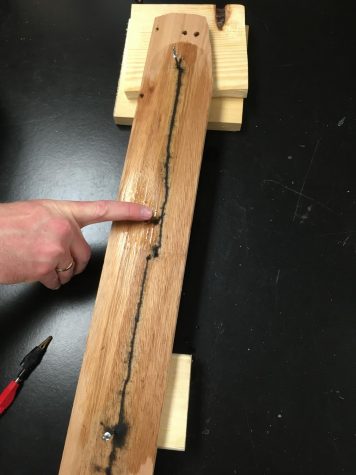
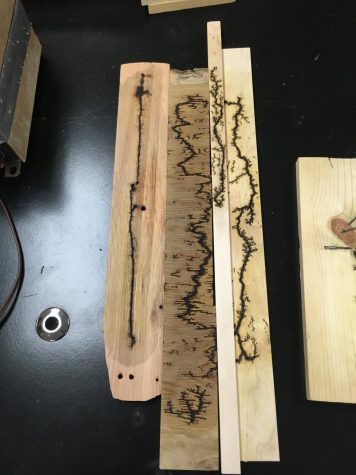
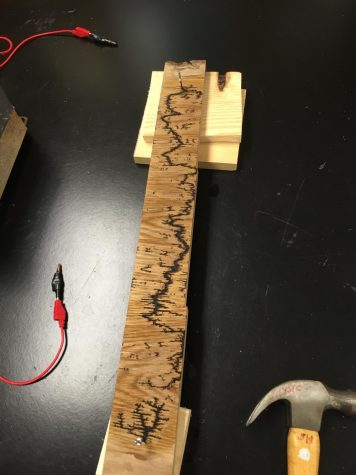

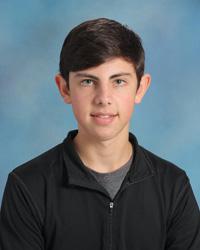





JT Kirages • May 29, 2019 at 3:59 pm
Thank you so much, Casey, for all of your kind words, your unrelenting edits, and, most importantly, your friendship over these past few years. I truly value you. Have fun next year and enjoy high school while it lasts. With only one day left, I only now realize how much I’ll miss this place and the people within it.
“May the wind under your wings bear you where the sun sails and the moon walks.”
Casey Murray • May 29, 2019 at 2:37 pm
Spectacular piece, JT — I would say incredible, but that would demean your talent and would be dishonest besides. Seeing you bring forth beauty with this profile was a profound joy, and I look forward with eager eyes to whatever masterpieces you might pen along the long road ahead of you.